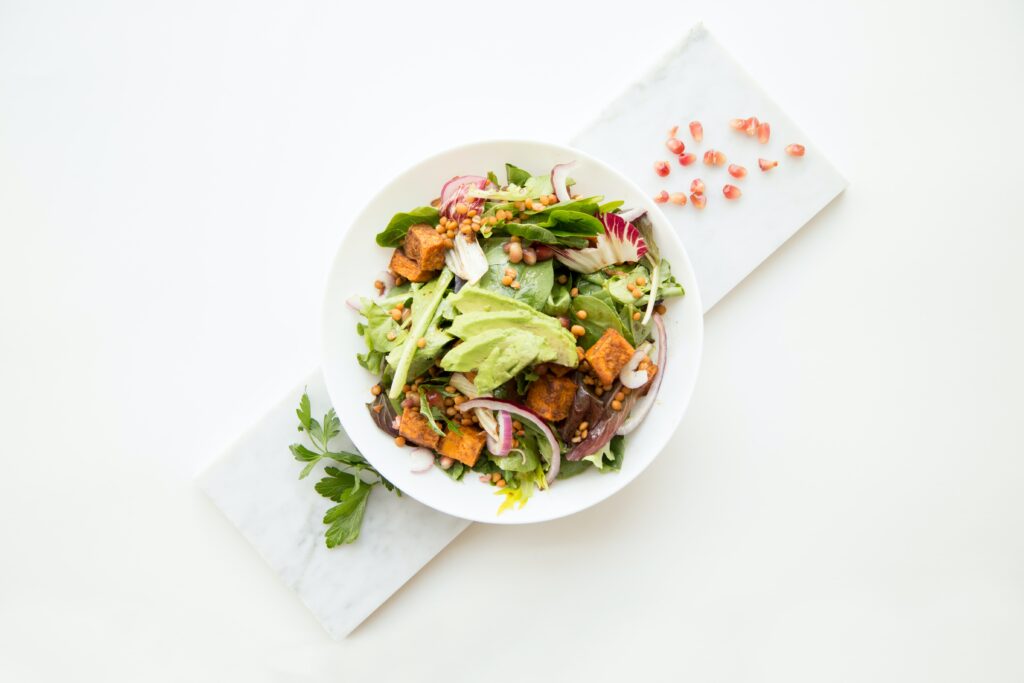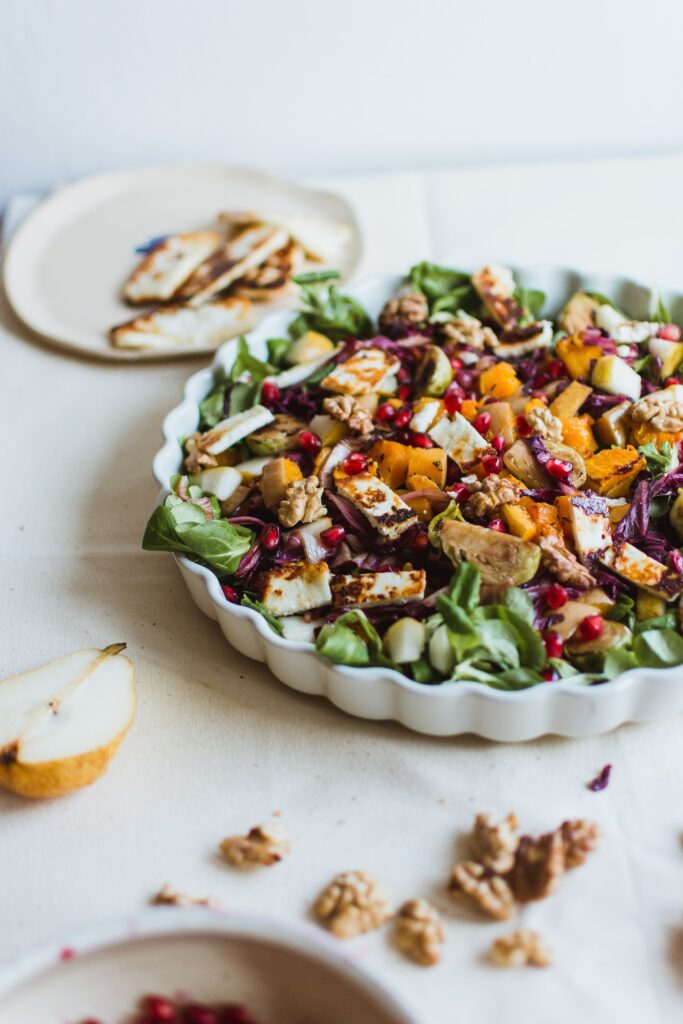Inflammation gets a bad rap. We’ve been conditioned to believe that all inflammation is harmful—but that’s not entirely the case. As with most things, there’s a gray area. When it comes to inflammation (like hormones!), there’s a delicate balance. From a nutrition standpoint, we can set ourselves up for success: via anti-inflammatory foods, healthier swaps, eating with the seasons, and consuming ingredients that make us feel our best. However, research proves there are some common dietary culprits. Today, we’re unpacking the pros and cons of inflammation, inflammatory foods to avoid, and their healthier, more nutrient-dense alternatives.

why we need some inflammation
Inflammation is a vital part of the human immune system. It signals the heal and repair process in the body. It’s a defender against foreign invaders (like, viruses and bacteria). In essence, it happens when a physical factor triggers an immune reaction. Without some inflammation, wounds would take longer to heal and infections could become deadly. But when inflammation persists on a daily basis, that’s when it can wreak havoc. Many major diseases, from cancer to Alzheimer’s, have been linked to chronic inflammation. Eventually, chronic inflammation can start damaging healthy cells, tissues, and organs. The goal is to recognize when too much inflammation is at play.

how do I know if my diet is causing inflammation?
By tapping into the classic signs of inflammation, you’ll likely know whether or not certain foods make you feel unwell. Of course, the best option would be to work with your healthcare practitioner or a GI doctor to know for certain. The responses you’ll experience after eating pro-inflammatory foods will likely range from mild to severe. If you regularly experience gut issues, like diarrhea and bloating, or congestion, eczema, or acne, you’ll want to take a closer look at your diet. Keeping a food journal and jotting down your symptoms can be very helpful. Even conditions like migraines, brain fog, and fatigue may actually be the result of a chronic, inflammatory response happening in your body.
how to decrease inflammation through diet
One of the best ways to decrease inflammation in the body? Eat anti-inflammatory foods. No surprise here. These foods are the opposite of inflammatory foods to avoid. They nourish the body on a cellular level, balance blood sugar, and help fight against unwanted inflammation. From potent herbs, like ginger, to fatty fish and other Mediterranean foods, fighting inflammation is two-fold: delicious and functional.

inflammatory foods to avoid
While there are a variety of uncontrollable things that cause inflammation—such as pollutants and environmental factors—we can be mindful of what’s in our homes and what we’re eating. Below are six inflammatory foods to avoid (or in the very least, aim to limit!). To make things easier, I’ve added alternatives for each.
Added (and artificial) Sugars
Excessive sugar intake has been linked to several health concerns. Think: diabetes, risk of obesity, and general inflammation. The worst part? Added sugar is in almost everything. Have you checked your ketchup recently? It probably has more added sugars than you thought. While grocery shopping, check labels to see exactly how many added sugars sneak into your food.
LIMIT / AVOID: artificial sugars (Aspartame, Sweet’N Low, etc.), as well as corn syrup, maltodextrin, sucralose, etc.
ALTERNATIVES: natural sweeteners, like raw honey or pure maple syrup; low-glycemic sugars—zero calorie and diabetic-friendly, like stevia and monk fruit; for sauces and condiments, check out Primal Kitchen (we love their ketchup!) and Noble Made.
Alcohol
Moderate alcohol consumption can have some benefits. However, heavy consumption can lead to a laundry list of concerns, including leaky gut, weight gain, and brain fog.
ALTERNATIVES: green tea, sparkling water with citrus, or an organic wine without standard additives.
Processed Meats
Conventionally-raised red meat and processed meats, such as ham, sausage, bacon and salami, have an increased amount of advanced glycation end products (also known as AGEs). And, saturated fat. Both of these are known to be inflammatory. Plus, meat that’s conventionally raised—as opposed to pasture-raised—is less nutritious, less humane, and worse for the environment.
ALTERNATIVES: pick lean proteins, such as organic chicken or turkey; opt for higher-quality red meat (pasture-raised / grass-finished); or choose one day during the week to go meat-less.
Conventional Dairy Products
Conventional dairy, like other conventional animal protein, is a known common allergen. Research shows it can cause IBS, acne, and hives. In short, an inflammatory response. It’s difficult to digest, making it a front-runner for one of the most common inflammatory foods to avoid.
ALTERNATIVES: organic / pasture-raised dairy, or coconut-based milk products.
vegetable oils
Foods high in industrialized omega-6s promote inflammation. Your common cooking oils, such as vegetable and canola oil, are very high in omega-6 fatty acids and low in omega-3 fats. Ultimately, we need both types of omega fatty acids. However, our standard American diet fosters an unbalanced omega ratio, thanks to an abundance of industrial seed oils. Consistent use of vegetable oils can promote chronic inflammation and lead to inflammatory diseases, such as cancer or heart disease.
LIMIT / AVOID: canola oil, safflower oil, cottonseed oil, sunflower oil, and grape seed oil.
ALTERNATIVES: extra-virgin olive oil, avocado oil, sesame oil, macadamia nut oil, and coconut oil.
Trans Fats
Truthfully, trans fats lack any redeeming qualities. These types of fats increase your bad cholesterol (LDL) levels and lower your good cholesterol (HDL) levels. This can increase your chance of developing heart disease and stroke. It can also lead to type 2 diabetes. If you see the words “hydrogenated oils,” try to avoid.
LIMIT / AVOID: deep fried foods; commercially baked goods; anything made with partially hydrogenated oil, or vegetable shortening.
ALTERNATIVES: natural peanut butter, tallow, duck fat, grass-fed butter, and ghee.

If the topic of inflammation feels overwhelming, don’t fret. Instead of taking a black-and-white approach, cutting out the foods you love, focus on wholesome, nutritious swaps. We can work together to create a meal plan that feels realistic and sustainable for you.
Images courtesy of Unsplash.
This post contains affiliate links. Thank you for supporting Wellness with Edie! This article is for informational purposes only. It is not, nor is it intended to be, a substitute for professional medical advice, diagnosis, or treatment and we recommend that you always consult with your healthcare provider.



Leave a Reply